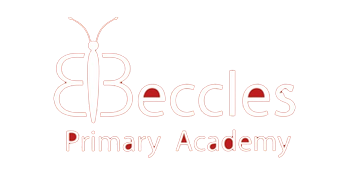Assessment principles in detail
Forms of assessment and their purpose
As part of a REAch2 school, we use three broad forms of assessment, each with its own purpose.
- Day-to-day in-school formative assessment, for example:
- Question and answer during class
- Quality next step marking of pupils’ work
- Observational assessment
- Regular short re-cap quizzes
- Scanning work for pupil attainment and development
- Peer review, marking & feedback
- Ascertaining how much pupils know and remember about the taught wider curriculum
Day to day in-school/remote learning formative assessment has different purposes for different stakeholders:
- For pupils: helps them to measure their knowledge and understanding against learning objectives and wider outcomes and to identify where they need to target their efforts to improve.
- For parents: provides them with a broad picture of where their children’s strengths and weaknesses lie and what they need to do to improve.
- For teachers: is an integral part of teaching and learning. It allows teachers to understand pupil performance on a continuing basis. It enables teachers to identify when pupils are struggling, when they have consolidated learning and when they are ready to progress. In this way, it supports teachers to provide appropriate support or extension as necessary. It also enables teachers to evaluate their own teaching of particular topics or concepts and to plan future lessons accordingly.
- For school leaders: formative assessment provides a level of assurance for school leaders. If school leaders are confident their staff are carrying out effective formative assessment, they can be assured that problems will be identified at the individual level and that every child will be appropriately supported to make progress and meet expectations.
- In-school summative assessment, for example:
- End of year assessments
- Short end of topic or unit tests
- Reviews for pupils with SEN and disabilities
- Spelling tests
In-school summative assessment has different purposes for different stakeholders:
- For pupils: provides them with information about how well they have learned and understood a topic or course of work taught over a period of time. It should be used to provide feedback on how they can continue to improve.
- For parents: can be reported to them to explain the achievement, progress and wider outcomes of their children across a period, often a term, half-year or year.
- For teachers: enables them to evaluate both pupil learning at the end of an instructional unit or period and the impact of their own teaching. Both these purposes help teachers to plan for subsequent teaching and learning.
- For school leaders: enables them to monitor the performance of pupil cohorts, to identify where interventions may be required and to work with teachers to ensure pupils are supported to achieve sufficient progress and expected attainment.
- Nationally standardised summative assessment, for example:
- National Curriculum tests at the end of Key Stage 2
- National Curriculum teacher assessments at the end of Key Stage 1
- Phonics Screening Test in Year 1 & Year 2
- Multiplication tables Checks in Year 4
Nationally standardised summative assessment has different purposes for different stakeholders:
- For pupils and parents: to provide information on how pupils are performing in comparison to pupils nationally.
- For parents: to provide them with information on how the school is performing in comparison to schools nationally. This enables parents to hold schools to account and can inform parents’ choice of schools for their children.
- For teachers: to help them understand national expectations and assess their own performance in the broader national context.
- For school leaders and school governors: to enable them to benchmark their school’s performance against other schools locally and nationally, and make judgements about the school’s effectiveness.
Curriculum Tracking System
To support schools regarding the assessment of all curriculum areas a system of Key Performance Indicators (KPIs) have been created which are closely aligned with national curriculum expectations. In each KPI, a child could be assessed as one of the following:
| National Code | Explanation of Code |
| GDS | if they are working at greater depth in the particular area assessed
|
| EXS+ | The judgement of Expected + (EXS+) will be available for optional use by schools, but will be included (by the Trust) as part of the overall Expected judgement and not analysed separately. This option has been requested by some schools as a further differentiation tool.
|
| EXS | if they have the relevant knowledge or have demonstrated the relevant skills in the particular area assessed
|
| WTS | if they are accessing with significant support the relevant knowledge or skills in the particular area assessed
|
| #WTS | If a child cannot access the knowledge or skills required in a particular area, they will need to be assessed in the relevant area of a previous Year group’s set of KPIs. This means that, overall, the child will be assessed as #WTS, with the # indicating the Year at which the child is working.
|
